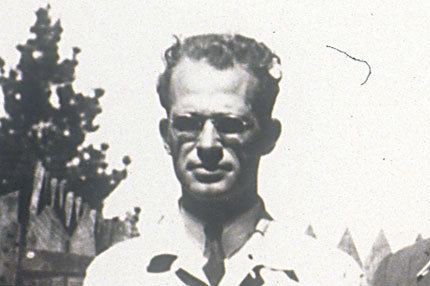Name Joseph Birdsell | ||
 | ||
Books Microevolutionary patterns in Aboriginal Australia, Human evolution Awards Guggenheim Fellowship for Social Sciences, US & Canada | ||
Joseph Benjamin Birdsell (30 March 1908 – 5 March 1994) of Harvard University and UCLA was an anthropologist who studied Australian Aborigines.
Contents
Biography
Born in South Bend, Indiana, he earned his degrees at the Massachusetts Institute of Technology and Harvard University. He made his first field study in the Australian outback in 1938 and returned periodically to study microevolutionary processes. Together with Norman Tindale, in field-work over 1938-29 in the Cairns rainforest, concluded that the indigenous 'pygmy' tribes there, which they collectively called Barrineans, belonged to a group that were genetically distinct from the majority of Australian aborigines, perhaps related to the Tasmanian people. A photo exists showing Joseph Birdsell, height (six feet one inch), with a twenty-four-year-old male of the Gungganydji tribe (4 feet, 6 inches), taken at the Mona Mona Mission, near Kuranda
He completed his doctoral degree at Harvard in 1941.
After teaching briefly at the State College of Washington, he served as an Army Air Corps officer in World War II. He taught anthropology at UCLA from 1948 until his retirement in 1974, continuing his research, and writing many articles and a widely used textbook on human evolution. His lifework was summarised in a monograph published in 1993 by Oxford University Press.
He died on 5 March 1994 in Santa Barbara of bone cancer.
He was awarded a Guggenheim Fellowship in 1946, and several of his field seasons in the Australia were financed by the Carnegie Corporation. He had a productive 50-year collaboration with Norman Tindale of the South Australian Museum and University of Adelaide.
He also collaborated with U.S. physical anthropologist Earnest Hooton.
The Birdsell model
Early scholars had tended to view the peopling of Australia as the result of three separate waves of immigration, with distinct human types. Birtdsell took a biological approach and did extensive work on anthropometrics to buttress his conjecture. This trihybrid model was resurrected and espoused by Birdsell, and became a standard part of Australian history down from the 1940s. It was adopted by the then doyen of Australian historians, Manning Clark in his 6 volume history of the country. In a recent polemic, Keith Windschuttle and Tom Gittin observed that the model had dropped from view, and attributed political motives to its disappearance off the popular and academic radar. McNiven and Russell argue that the trihybrid theory was discarded as the natural outcome of advances in archaeological work on the populating of the Australian continent, and that Birdwell's theory's initial popularity was due to the old colonial mentality informing opinion, which saw in the successive wave theory support for the dispossession (in a fourth wave) of Aborigines and to undermine native title claims.
In his seminal paper of 1977, 'The recalibration of a paradigm for the first peopling of Greater Australia' examined the standard models for the origins of the Australian Aborigines regarding how human migration from South East Asia could cross the Sahul barrier. Birdsell theorized a distinctive model challenging the accepted view, outlining three variants for a northerly model positing a route through Sulawesi, and two for a conduit to the southern continent via Timor.
Publications
Some of his publications included:
